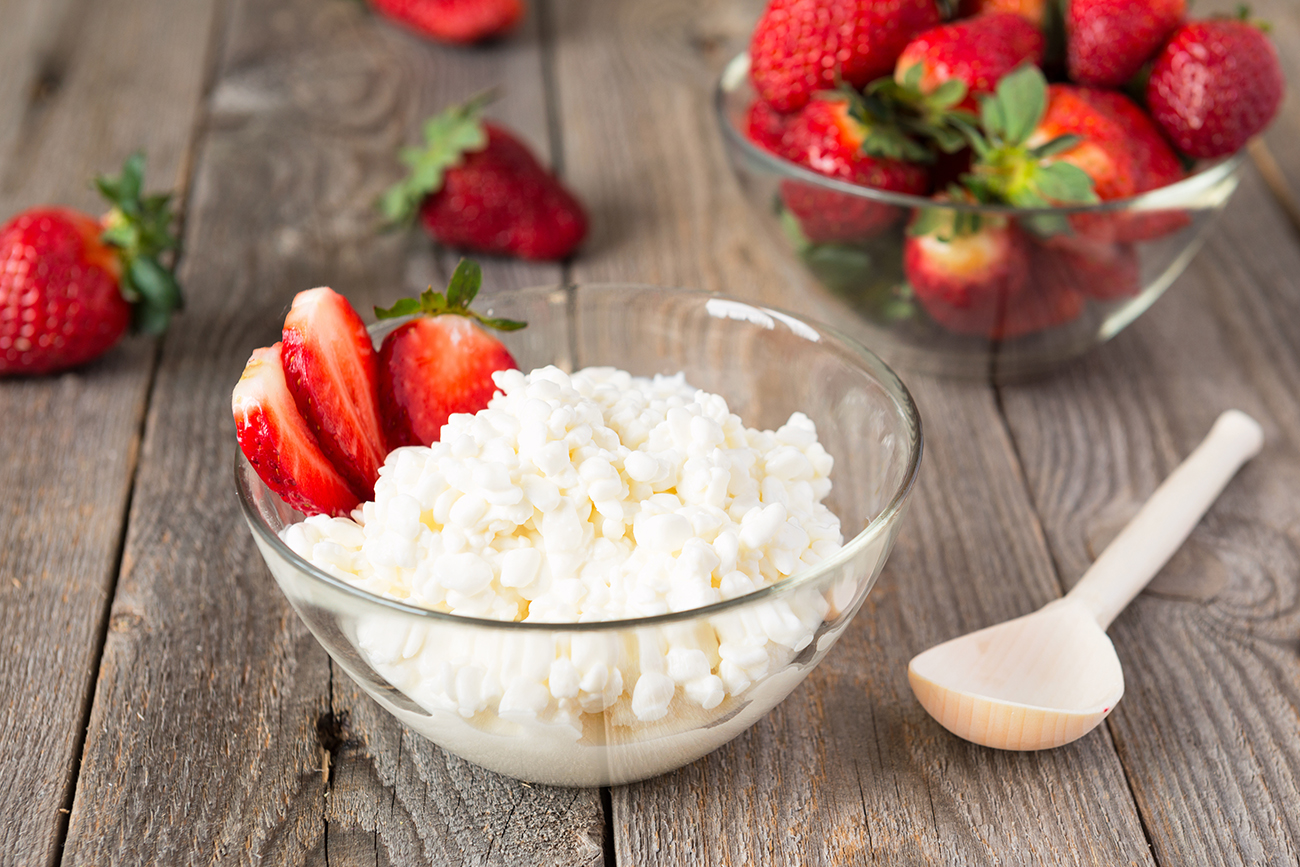
Most fittingly the name derives from the verb "tvorit'" - "to create".
Legion MediaI have adored tvorog since I was a child. My mother told me to eat tvorog if I wanted my bones to be strong and my teeth to be sharp. And I didn't need much convincing. I used to devour the snow-white substance with enormous pleasure. Practically all Russians love tvorog and anything made with it. The possibilities are endless.
Russian cuisine is famous for baked goods, and among the most popular are the vatrushka - rings of dough with a tvorog filling in the middle. They’re an indispensable feature of Russian teatime.
Apart from kulich cake, the festive table for Orthodox Easter includes a dish that in Russian means "Easter" - paskha. It is a block of tvorog in the form of a truncated pyramid symbolizing the Holy Sepulcher. Paskha is made from strained tvorog, cream, eggs and sugar, with the addition of raisins, dried fruits and nuts.Alongside the Russian favorite of pelmeni (meat dumplings that resemble ravioli), there is a dish prepared in a similar way, except that the meat filling is replaced with tvorog, potatoes or berries. They’re called vareniki and, in my opinion, the best vareniki are made with tvorog.
Tvorog is an ingredient of many other dishes. I have much fondness for the tvorog pie that is regarded as the ancestor of American cheesecake. There’s a theory that the recipe for this dessert, which has now conquered the world, came to the New World with immigrants from Eastern Europe. Over time it underwent a number of changes to become the dish we know today.
Tvorog basically consists of the solid part of cultured milk in its pure form without any additives, and it’s up to you whether to make it sweet or savory. It can be mixed with sour cream and jam or honey - the result is a great-tasting dessert with a huge amount of healthy vitamins and minerals. I personally prefer it savory, adding finely chopped garlic, parsley and dill, and soften it with low-fat soured cream.After getting a uniform consistency, I spread it on dark sourdough rye bread and top the sandwich with some herring. My wife initially found this way of eating tvorog peculiar and said she wouldn't eat it like that for anything. But one day I caught her making sandwiches using my recipe: she had tried it and come round to the view that it was tasty and interesting.
Another one of my favorite quick dishes is pasta with tvorog. I toss the tvorog, garlic and herb mixture with durum wheat spaghetti or penne. The only difference is that it’s better to use olive oil instead of sour cream, and finely chopped capers can be added for more flavor.The good thing about tvorog is that its high concentration of protein and nutritious components makes it a health food that is easily digested. It’s particularly good for growing children and athletes engaged in strenuous activity. The bacteria in tvorog have a positive effect on the gut’s microflora. But these bacteria are absent from ordinary cottage cheese - they have to be sacrificed for the sake of lengthy storage.
I have even heard that tvorog has an effect on the nervous system, acting as a sort of homemade anti-depressant. I can't vouch for the veracity of such claims, but every time I have some tvorog, or eat something tasty made of it, my mood markedly improves.
2. Reduce the heat to a minimum, and stir constantly until the curd fully solidifies.
3. Separate the solids from the whey; pour the contents of the saucepan into a colander with muslin placed on top, then squeeze out to drain.
If using any of Russia Beyond's content, partly or in full, always provide an active hyperlink to the original material.
Subscribe
to our newsletter!
Get the week's best stories straight to your inbox